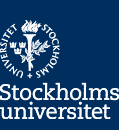Professor Sarah Green, University of Helsinki
Managing animal movements and quarantine across the Mediterranean: outline of a parallel border regime
People have designed procedures and techniques to control the movement of living animals and, as importantly, to control the movement and spread of animal diseases, across space for centuries. Yet, while the borders that manage and attempt to control the movement of people have received enormous attention from researchers, including anthropologists, the parallel system that manages the movement of animals appears to be virtually invisible - except when the French President wants to send a horse to the Chinese President; or, occasionally, when animal activists get headlines in their ongoing attempts to prevent the long-distance transportation of livestock; or, more often, when an infectious disease breaks out (foot and mouth, bird influenza, swine flu, BSE, etc). Even when these stories appear in the media, little is said about the border regimes that are supposed to regulate the movement of live animals and attempted control over the spread of their diseases.
This paper aims to outline the basic structure of the border and quarantine regimes that are designed to control the movement of animals and their diseases across the Mediterranean region, that place which is currently the focus of intense attention because of the spontaneous migration of people across that sea. The paper argues that animal border regimes in this region work according to a distinctly different logic from those governing the movement of people. In particular, arrangements for the movement of animals across borders has always strongly and explicitly involved cross-border collaborations - and importantly, mutual agreements about the logic involved: the veterinary science, the trade interests, the political interests. And secondly, animal border regimes are currently predominantly governed by surveillance systems. The combination of these characteristics allows an exploration of the work that border regimes do which concern different ways of creating relations and separations between places than those being focused upon involving refugees. Taking this sideways look at a parallel border regime may help to make certain distinctive, but implicit, elements of the human border regime more explicit.




